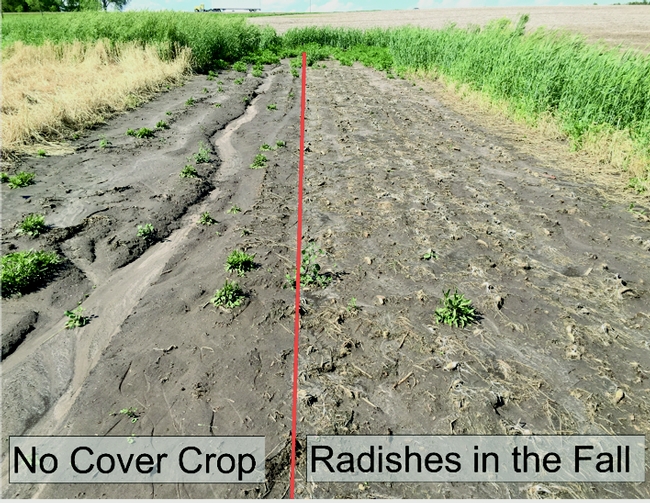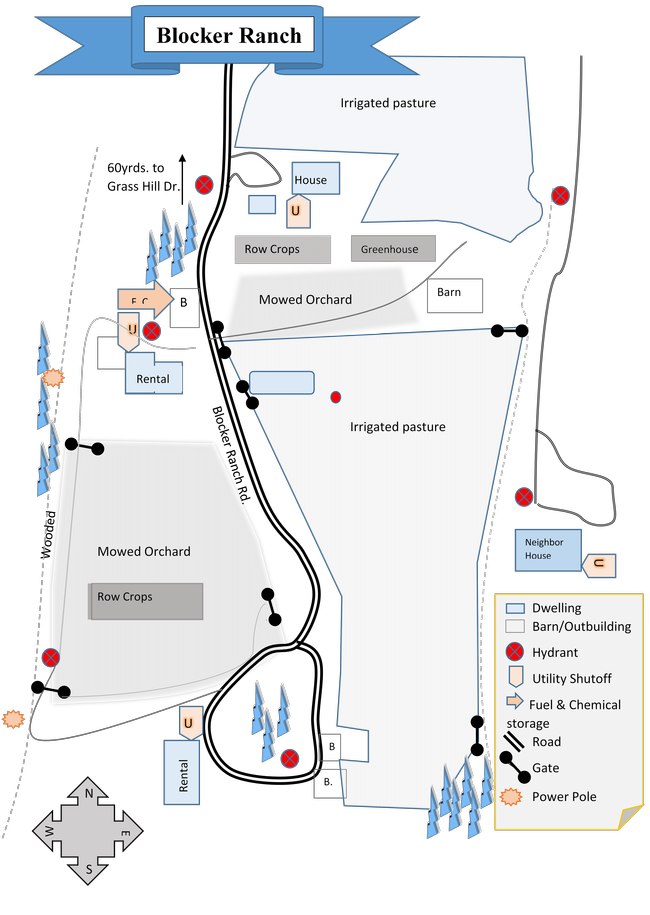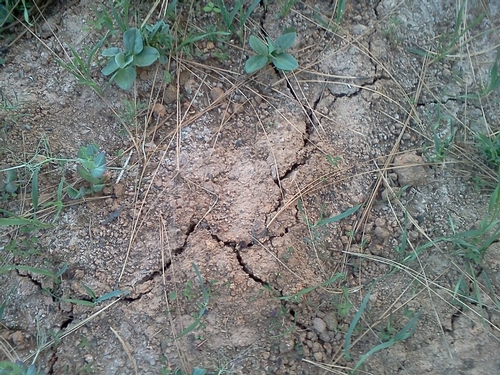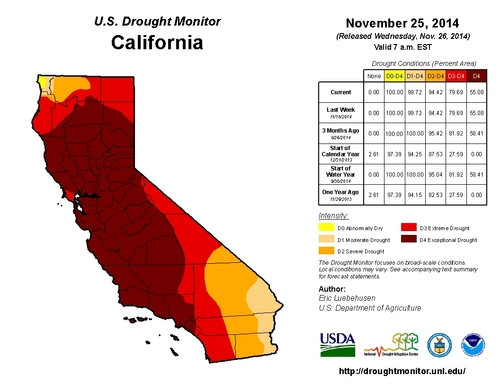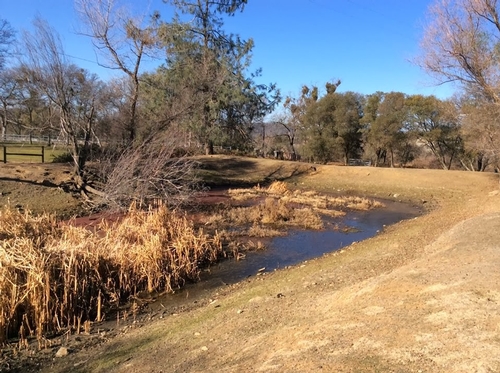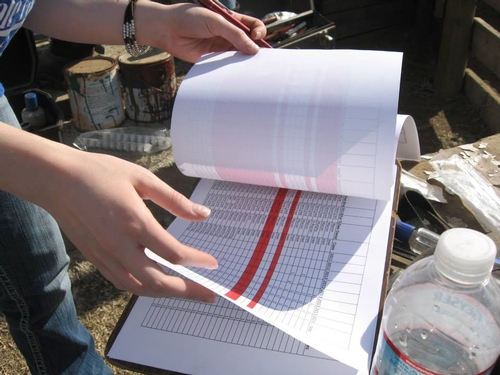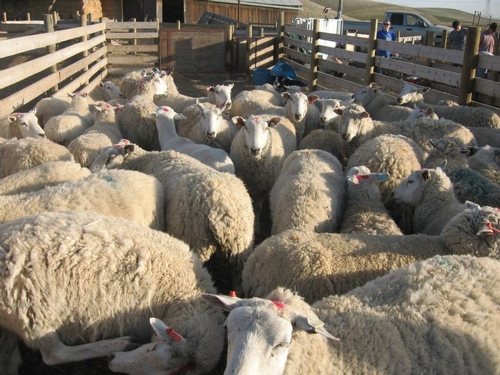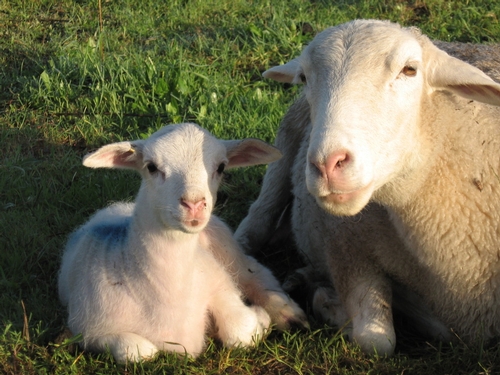Posts Tagged: risk management
Risk - What are You Waiting For?
Risk – What are you waiting for?
As the old saying goes, when it rains it pours. Nobody knows that better than we do right now, literally. For most farmers, rain is a good thing. However, for mandarin growers the amounts of rain and lengthy periods of high humidity are not good for mandarins in the middle of the season. This brings up the issue of risk on the farm. Drought, wildfire, food safety issues, crop loss, rain or frost damage are just a few of those risks.
Despite the periodic heavy rains, Placer and Nevada Counties are considered “abnormally dry” for this time of year according to the national drought monitor. After moderate and severe drought, this may seem like a fairly normal year. With shifting climates the “abnormal” could become normal over time. As we saw this fall, wildfire tore through thousands of homes and hundreds of thousands of acres. It seems the “most devastating wildfire in history” is becoming a headline each year.
While the risk of catastrophic wildfire seems to be increasing each year, rain and frost damage have historically plagued foothill farms. With travel throughout the world as easy as an overnight plane ride, international agriculture pests and diseases are also a real possibility here. I am not trying to scare you - I just want to highlight the need for farmers and ranchers to be aware of and plan for risks, and have the necessary resources to get through it.
Mother Nature is not the only risk; consider the romaine lettuce farmers on the Central Coast who had no market this fall when E. coli was found in that product. Even if one farmer did everything possible to maintain food safety, their crop may have been a total loss. Wouldn't you be glad to have crop insurance or revenue protection in place if you were in their shoes?
You will have the opportunity to hear from a fellow farmer and insurance agent, Domenic Fino of Golden Pacific Crop Insurance at the Farmer-to-Farmer Breakfast on January 9th at the Auburn UC Cooperative Extension office, from 8 to 11 AM. Sign-up today at http://ucanr.edu/survey/survey.cfm?surveynumber=26336 It's time to be informed and prepared to protect your farm.
Resources available on our website:
Risk Management https://ucanr.edu/sites/placernevadasmallfarms/Farm_Business_Planning/FBP_Risk_Management/
Drought Planning - https://ucanr.edu/sites/placernevadasmallfarms/Drought/Drought_Planning/
Financial Resources and Insurance programs https://ucanr.edu/sites/placernevadasmallfarms/Resources/Financial-Resources/
Farm Preparation for Wildfire and Other Emergencies
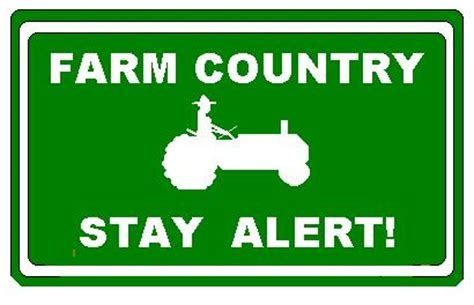
According to many state fire officials, we no longer have simply a ‘Fire Season' but a ‘Fire Year'. In winter drought conditions, some parts of our region do not receive enough rain to mitigate fire danger. It is more important than ever to constantly assess your farm for fire safety and be prepared for any emergency.
The following information will assist you in thinking through four important areas of disaster preparedness for your farm: Paperwork & Plans, Farm Map & Layout, Tools & Machinery, and Operations & Training.
Paperwork & Plans:
- Conduct a fire risk assessment and record your findings. Assess brush clearance, road access, evacuation routes, defensible space, topography (fire climbs hills quickly), and water sources. If needed, make a plan to address any critical issues.
- Evaluate current insurance coverage to ensure adequate coverage for farm assets. Consider livestock, crops, buildings, and equipment.
- Keep up-to-date production, marketing, and financial records. Check the Foothill Farming website resources on risk management and business planning tools for templates. Scan or store them on a USB flash drive or external hard drive.
- Make a farm communication plan. What happens if you are not home during a disaster situation? Do you have phone numbers and good relationships with neighbors? Are the phone numbers written down for your family members and employees as well?
- Create a farm emergency plan, use the following free online templates or use them as a guide to create one more suitable for your own farm.
- http://ucanr.edu/sites/placernevadasmallfarms/files/289237.pdf
- https://www.formsbank.com/template/325465/emergency-plan-for-farm-template.html?page=5
- http://www.maeap.org/uploads/files/EMERGENCY_PLANNING_fillable_Form_E2575-ET_AA.pdf
- http://www.ncagr.gov/disaster/Farm-Emergency-Plan-Template.pdf
Developing a farm emergency plan before a disaster can help you respond more rapidly and objectively.
Farm Map & Layout:
- A farm map should be part of your emergency plan. Create a map including symbols and a key for the following:
- Homes, barns, and outbuildings.
- Utility shutoffs.
- Power and utility lines.
- Fuel and chemical storage.
- Roads and bridges (including weight limitations).
- Water sources and delivery systems.
- Gates (including combinations).
- Fuel breaks.
- Any other possible farm hazards.
You may include brief general guidance for emergency responders on the map as well.
- A well-maintained and accessible water source is critical. If possible, consider a water source for fire trucks. An accessible source includes:
- Defensible space.
- Gravel road access within 12 feet of water source.
- Minimum 45-foot radius turnaround close by.
- Post permanent signs indicating water source location.
- For more detailed information about what is needed at a water source, check out this information from Oregon State Extension https://catalog.extension.oregonstate.edu/sites/catalog/files/project/supplemental/pnw618/pnw618-chapter6.pdf
- Farm design should incorporate these principles, especially around structures. Create at least 100 feet of defensible space by:
- Removing flammable objects from around barns or dwellings (e.g. flammable vegetation, feed bags, cardboard boxes, plant debris, fuel, etc.).
- Breaking up fuel continuity by separating plants from each other in gardens and landscape design.
- Taking care in selecting, locating, and maintaining trees.
- Post a clearly visible sign with property name and number at the entrance.
Tools & Machinery:
- Carry fire extinguishers and fire tools, especially in off-road vehicles. (e.g. trucks and tractors), CalFire requires a 5-gallon water supply and a fire tool be carried in wildland settings – consider adding this equipment to your tool box!
- Conduct frequent inspections of farm machinery for debris removal. Pay attention to hazards associated with exhaust systems and catalytic converters.
- All farms should have proper personal firefighting equipment such as shovels, hoes, and fire extinguishers that all farm employees can carry.
- Use rodent deterrents as they can chew through electrical insulation.
- Limit or postpone machinery use on high fire danger days. If use is unavoidable, plan for competing tasks before 10:00 AM.
- Stay 30 minutes after machinery use is shut off to monitor fire risk.
- More tips on preventing farm equipment fires, http://www.redrivermutual.com/wp/wp-content/uploads/Preventing-Farm-Equipment-Fires4.pdf
Operations & Training:
- Conduct an annual fire plan and equipment “refresher” for all farm personnel. Consider labeling safety equipment and fire tools on your map, with signs for your employees and family. Train folks on how to use this equipment.
- Have a routine for “red flag days” such as delaying mowing or machinery use.
- Although California law requires all electric fences to have low-impedance chargers, check frequently to ensure wires are free of materials that may cause the fence to arc. Always operate according to manufacturer directions.
- Restrict or clearly designate smoking areas.
- Include fire danger mitigation and forest management in annual planning.
Fire prevention should be a year-round activity in our fire-prone region. Be sure to consider the needs of both family and farm personnel in any emergency situation. Proper planning now will help mitigate the inevitable stress involved in farm emergencies. We would love to hear your thoughts, plans, and ideas related to disaster preparedness. Please feel free to comment below.
Expect the Best and Prepare for the Worst: Understanding the Risks of Agriculture
We like to get farmers and ranchers together and ask them this question: What could go wrong? Preferably after they've had a good night's sleep and a filling breakfast and at a time of year when their farms and ranches are relatively quiet. It is not the happiest of conversations, to say the least. But we feel that talking about farm and ranch risks, and hopefully, taking steps to create resilience in the face of these challenges, is critical to the success of agricultural businesses. Having a plan of action in the face of unforeseen crisis can be the difference between making it and losing it all.
Here are a few topics that came out of recent Risk Management discussions held during our Farm Business Planning short course and Farmer-to-Farmer Networking Breakfasts (for info on both of these events, visit our Foothill Farming website.)
Human Risk – What happens if you get hurt or sick?
This is not a fun topic. Knock on wood, you will be fit as a fiddle into a ripe old age. But what if? You need to buy health insurance. Period. You don't have the money or time to deal with being uninsured when you need health care. Take it from a gal who's racked up hundreds of thousands of dollars in medical bills, health insurance is well worth the investment.
You also need to have an Operations Manual. Do it right now! Write down each enterprise that your business relies on and the basics of keeping it functioning from day to day. It can be rough but should be enough information that a person could read the thing and keep everybody/thing alive. Print it out and keep it in an obvious place, like a binder that says “Operations Manual.” Tah Dah! Your business just became more resilient.
Now you need a designated person/persons who can read the Operations Manual and run your farm in your absence. Employees are a good place to start as they probably have a good idea already. How about a neighbor or good friend? Have them over for a cup of tea and show them where the operations manual is kept. Maybe walk through a typical feeding of the animals or watering the greenhouse. How about a farm buddy system? I'll be your emergency farmer if you'll be mine.
Marketing Risk – What if there is a sudden change to your sales outlets?
Marketing risk is a much tougher nut to crack and prepare for. We build our businesses around projected sales to retail outlets, restaurants, and farmers' markets. What if one of those outlets suddenly became unavailable? You've produced the product and may not have another buyer lined up, so what options do you have?
Jim Muck of Jim's Produce has a good strategy. He tries to always have three potential outlets for a farm product, e.g. Restaurant A, Restaurant B, and Grocery Store X. While he may have made a commitment to Restaurant A for the season, he knows that if Restaurant A were to go out of business both Restaurant B and Grocery Store X would likely be interested in the product he was supposed to sell to Restaurant A.
So what are your options? Would your wholesaler buy more? Do you have a relationship with a Farmers' Market Association that will allow you to attend a market at the last minute? How about a place that will always take a bulk order to make jam or salsa? As Paul Muller of Full Belly Farm says, a successful farmer must spend her time “100% farming and 100% marketing.” Take a moment to identify your most risky marketing outlet and create a back-up plan for that product.
Legal Risks – Are you above board with your employees?
If you aren't filing payroll tax and covering workers with workers compensation insurance, you're walking on thin ice (and technically, breaking the law.) While talk of the costs may have dissuaded you from hiring employees the right way, it's time to make the switch. And if you think you can't afford minor costs like payroll tax and insurance, you may have bigger problems in your production plans than you realize. These costs are insignificant enough that you should be able to pay for them if you can afford hired labor. The risk of getting busted for violating labor laws is significant and fines could very well put your farm or ranch out of business. Time to read up on how to follow the law (getting legal?.
Financial Risks – How well do you understand your Cash flow?
It is likely that your farm and ranch business goes through ups and downs in your cash flow cycle. Our work is largely dependent on the seasons and cycles of animals and therefore there are times when we have a lot of cash coming into the business and there are times when there is not a lot coming in. For many of us, when we have the least amount of cash coming is also when we have a lot of cash going out! Create a cash flow budget for your farm that shows the months across the top and different categories of income and expense along the side. You can then go through and project income and expense by month. This will help you plan for when cash is short, and budget more stringently when income is strong. Another strategy to weather a lopsided cash flow is to move major bills and payments to times of the year when you have income. For example, pay for liability insurance in August instead of February.
Production Risk – Do you have a plan for wildfire?
We farm in a part of California with a particularly high threat of wildfire. Now is a great time to get your wildfire plan written down and understood by all involved. Do all of your properties have at least two exits? What will happen to your livestock if you happen to be out of the area when a fire threatens your farm? Did you know that Cal Fire does not want you to leave sprinklers on when you evacuate and would rather you place buckets of water around structures? Do you maintain 100 feet of defensible space around all outbuildings? There are a lot of great resources available online to help you get started creating a plan. Start off by reading this Foothill Farming blog post on wildfire planning: http://ucanr.edu/sites/placernevadasmallfarms/blog/?blogpost=19003&blogasset=24945
One of the most important parts of managing risk on your farm is preparing yourself for the emotional toll that accompanies all of these scenarios. By taking a moment to think through a list of potential risks and what actions you'll take in the face of these risks, you are making yourself more resilient. Understandably, an initial reaction to these scary situations is to avoid thinking about them altogether. By looking at these risks as hypothetical situations, we are training ourselves and our businesses to react effectively if and when we need to.
For more information on the types of risk your farm or ranch needs to prepare for, visit the Risk Management section of our Foothill Farming website: http://ucanr.edu/sites/placernevadasmallfarms/Farm_Business_Planning-_new_2/FBP_Risk_Management/Risk_Management/
Measuring the Drought: How Farmers and Ranchers Can Report on Drought Impacts
In early November, the California Rangeland Watershed Laboratory at UC Davis hosted a workshop/webinar entitled “Ranching and California's Drought” (for videos of the presentations, CLICK HERE). For me, one of the most interesting parts of the workshop was a panel discussion featuring several of the authors of the U.S. Drought Monitor (go to http://droughtmonitor.unl.edu/ for more information about the Drought Monitor). According to the Drought Monitor website:
“The U.S. Drought Monitor, established in 1999, is a weekly map of drought conditions that is produced jointly by the National Oceanic and Atmospheric Administration, the U.S. Department of Agriculture, and the National Drought Mitigation Center (NDMC) at the University of Nebraska-Lincoln. The U.S. Drought Monitor website is hosted and maintained by the NDMC.
“U.S. Drought Monitor maps come out every Thursday morning at 8:30 eastern time, based on data through 7 a.m. the preceding Tuesday. The map is based on measurements of climatic, hydrologic and soil conditions as well as reported impacts and observations from more than 350 contributors around the country. Eleven climatologists from the partner organizations take turns serving as the lead author each week. The authors examine all the data and use their best judgment to reconcile any differences in what different sources are saying.”
This weekly map is important for several reasons, not the least of which is the fact that it is increasingly used to determine eligibility for government-funded drought relief programs for farmers and ranchers. It's also used by the Internal Revenue Service to determine how long a rancher who has sold breeding stock can defer his or her capital gains tax bill. I learned during the workshop that the Drought Monitor authors rely on on-the-ground observations as well as remotely-sensed data on soil moisture, precipitation, vegetation and a variety of other factors. Most applicable to me, the panel discussed ways that farmers and ranchers can provide real-world information to the Drought Monitor, which will help them improve its accuracy and timeliness.
What types of information are useful?
Obviously, on-the-ground information about precipitation is critical information. Rainfall and snowfall amounts can vary greatly over short distances, and actual precipitation totals are an important dataset for the Drought Monitor. Most of us have rain gauges – we should be recording daily rain and snowfall totals for our own records!
The panel indicated that information on forage production and other vegetation responses to precipitation are most useful when placed in historical context – in other words, reporting that our annual rangelands produced 2,000 pounds of forage per acre in 2014 isn't as useful as providing documentation that last year's forage production was 77 percent of the historic average. That said, many of us have taken photographs of our farm or ranch on an annual basis – and these photographs often show differences in vegetation from one year to the next. I've started using an iPhone application called GrassSnap (go to http://centralsandhills.unl.edu/GrassSnap for more information) that allows me to take repeatable photographs from a specific spot. I'm going to start taking these photos of our home pasture on the first of every month – a quick and easy way to track forage production from month-to-month and year-to-year.
Another useful bit of data that I've been tracking (without realizing it might be important to the Drought Monitor) are bloom and leaf-out dates for some of the landscaping plants at our home. I've recorded the bloom dates for our lilacs for the last 13 years. I've also recorded bloom dates for our daffodils. Weather and soil moisture can impact these dates, and this information (because I've got some historical context for it) is useful for the Drought Monitor. I've also recorded the dates when I first see the blue oaks starting to leaf out – another helpful indicator. We have four enormous mulberry trees in our yard – I've generally tried to record the date when they've finally dropped all of the leaves (and when we can stop raking them up!). All of this information is related to our weather conditions.
Speaking of dates, there are other useful weather and climate related dates we might record - the date of the first killing frost, for example. I've also recorded the date when I first hear or see the sandhill cranes flying over – either on their trip north in the early spring or their return trip south in the early fall. There may be other types of migratory wildlife on our farms and ranches that can help provide some indication of weather and climatic conditions. The dates when creeks start or stop running are useful information, as are the dates when vernal pools or stockponds start to fill or become dry.
In addition to these weather-related impacts, many of us have experienced management and economic impacts from the drought. Have you sold livestock because of lack of forage or stockwater? Have you had fruit trees die? Have you had your irrigation water deliveries curtailed? Have groundwater levels dropped? Have you observed health issues in your livestock or crops that might be weather related? For example, we experienced a fairly severe outbreak of the bluetongue virus this fall, which was probably related to the relatively mild and very dry winter of 2013-2014. The Drought Monitor uses these types of reports to quantify the economic impacts of drought.
I'm incredibly busy – why should I take time to observe and report conditions? Isn't that the government's job?!
All of us are busy – ranching and farming provide “opportunities” to work more than full time for most of us! Recording the types of information I've listed above takes time, as does submitting reports to the Drought Monitor. While improving the accuracy of the Drought Monitor is an important goal on its own, I've found that recording this data helps me become a better manager. For example, tracking rainfall totals last year helped me identify some critical dates for making decisions about stocking rates based on what our forage production was likely to be two or three months in the future. Someone once said that drought can sneak up on you – it's not like a snowstorm that's predicted days or weeks in advance. Keeping track helps reduce the element of surprise!
For me, at least, recording and reporting my observations is important psychologically, too. Most of us probably experienced a feeling of helplessness at some point last winter when we were in the midst of our 50-plus day dry spell. No matter how hard I tried, I couldn't make it rain. Keeping track of weather and climatic conditions – and reporting on these conditions to the Drought Monitor – gave me something useful to do. This might seem like a stretch, but there's something to it, at least for me – doing something is better than doing nothing!
How can I report drought impacts and conditions to the Drought Monitor?
There are several formal avenues for reporting impacts and conditions to the Drought Monitor. First, the National Drought Mitigation Center maintains a drought impacts reporting website (go to http://droughtreporter.unl.edu/). By clicking on the “Submit a Report” button at the top of the page, you can follow the simple, on-screen directions to submit your observation. The site is moderated, which means someone at the Center reviews each report and determines whether it can be considered a drought “impact” which can be used to inform the drought monitor map. Again, historical context is important - when you make a report, compare current conditions to previous years. For instance, you might report that a particular creek has never gone dry in the 50 years you've observed it. You can submit regular monthly observations as a “condition report ” to help build a historic record; summary information, such as how forage production compares to the historic average; or other observations or qualitative information on how drought conditions differ from normal.
I've also created an account on the Community Collaborative Rain, Hail and Snow Network (http://www.cocorahs.org/). This website allows me to report daily precipitation observations. To ensure uniformity, the network asks members to use a specific rain gauge (and a link to an affordable source of these gauges is provided). The Drought Monitor authors do review precipitation reports on the network website as they make their weekly updates. As an admitted weather nerd, I've also found the daily precipitation maps generated on this website to be very interesting – it's just one more way of “looking over the fence” to see what's happening at the neighbors!
The importance of our stories!
Finally, qualitative information about the drought is just as important as quantitative data. Our stories have importance, too – both for current research and future generations. This drought is the most severe in a generation. We need to share our stories with our families and with our neighbors – the colors on the Drought Monitor map will only impact public policy if we are willing to share the real-world effects on our land, our businesses, our families and our communities. Fortunately, most of us have access to technological tools that make recording our stories easy. One of the best sites I've seen for recording these stories is the SoundCloud Voices from the Drought site moderated by Brad Hooker at the UC Davis Plant Sciences Department. For more information about the project, go to //ucanr.edu/blogs/blogcore/postdetail.cfm?postnum=13098. To listen to the Voices from the Drought stories, go to https://soundcloud.com/groups/farmer-and-rancher-voices-from-the-drought.
Dan Macon is a Community Education Specialist in the Placer/Nevada office of UC Cooperative Extension. Dan and his family also operate Flying Mule Farm, a small-scale commercial sheep ranch in the Sierra Nevada foothills. For more information, go to www.flyingmule.blogspot.com.
More Risky Business
If you’ve been reading our “Farming in the Foothills” blog over the last year, you’ll know that commercial farming is inherently risky profession. My fellow farmer Molly Nakahara (of Dinner Bell Farm) did a great job of describing farming risk in her October 28 post, “Farming, the Original Risky Business.” We farmers and ranchers face numerous uncertainties – from the weather to the marketplace to the regulatory environment. Some of these risks are short-term – like the snow storm that cancelled last weekend’s farmers’ market in Auburn. Some are long-term – like the potential impacts of new federal food safety standards on direct-market growers. Some risks can be eliminated, while others can only be mitigated. Our success as farmers and ranchers, in large part, depends on our success in managing these risks.
As a sheep rancher, there are two weather-related risks that foremost in my mind at the moment – one short-term and one long-term. As we wrap up our fall lambing season, we are in the midst of our regular early December cold snap. While the first week of December usually brings some of the coldest temperatures of the year, this year’s cold snap is especially severe and protracted. Since December 4 in Auburn, our morning lows have been in the teens, and our daytime highs have been in the high thirties or very low forties. At McCormack Ranch in Rio Vista, where we are lambing, the temperatures haven’t been much warmer. The cold weather presents a number of challenges: lambs that aren’t getting enough mother’s milk can quickly succumb to hypothermia. Lactating ewes that aren’t getting enough drinking water won’t produce as much milk. The sheep have to consume more feed just to maintain body temperature (let alone produce milk), so their feed demand increases.
From a longer-term perspective, we appear to be in the midst of a protracted drought. While we had a bit of rain in September, this fall has been dryer than normal. We finally got a germinating rainfall in mid-November – just in time for the weather to turn cold and the grass to go dormant. As a grass-farmer, I depend on fall grass growth to get our sheep through the winter months – and this year we didn’t get much growth. As we look toward next year, I’m very concerned that we may not have enough irrigation water to carry us through the summer months. The Nevada Irrigation District (NID) recently reported that we just experienced the driest January-November period in the district’s history – just over 20 inches of precipitation fell in NID’s upper watershed in the past 11 months. Unless we catch up soon, we may be facing reduced water deliveries next summer.
Obviously, these challenges can make for depressing conversations with other farmers, but there are some strategies we can use to mitigate (rather than eliminate) these risks. The weather is beyond our control, but our response to these conditions is not. Here are a few of the things we’re doing to manage these risks:
Short-term – sub-freezing temperatures
- As soon as we saw the forecast for sub-freezing temperatures, we moved the ewes who had not lambed into more sheltered paddocks. Lambs and ewes can deal with cold temperatures as long as they can avoid windy and wet conditions. These paddocks also had plentiful forage, which ensured sufficient feed intake for lactation and body temperature maintenance.
- We wrapped all of the pipes on the ranch to reduce the possibility of breakage (and subsequent time-consuming repairs). We also placed extra troughs in each paddock that we could reach with a hose from the water truck – if the permanent troughs froze, we could at least fill the temporary troughs from the truck.
- We moved the ewes with older lambs into the hills and increased the amount of hay we were feeding – again, to maintain milk production.
Long-term – drought
- We usually plan on culling 10-15 percent of our older ewes and replacing them with ewe lambs. We’ve been expanding our flock over the last several years, which means we cull fewer ewes and keep more ewe lambs. This year, we’ll consider culling more deeply – perhaps 20-25 percent of our ewes will be sold once we’ve weaned their lambs. We’ll also only keep ewe lambs out of our best and most productive ewes. While this will reduce our sheep inventory in the short-term, it will improve the overall productivity of our flock (measured in terms of lambing rate and pounds of lamb raised per ewe) over the long-term. Drought, then, allows us to improve the genetics of our flock.
- We’ll once again limit the number of lambs that we’ll keep to finish on grass and market directly to customers. As in 2013, we’ll base our decision on the amount of high quality summer forage likely to be available to us.
- We’ll evaluate the potential to invest in more efficient irrigation technology, like pod sprinklers. If we can make our irrigation water go further, we can grow more forage.
- Finally, we’ll also look for opportunities to graze alternative forages. This year, we’ve grazed crop residues and green “weedy” forage at Amber Oaks Farm in Auburn. We’ve also grazed alfalfa stubble in Rio Vista. Grazing helps to manage pests (plants and insects) on these operations while providing our sheep with higher quality forage.
Even with a risk management plan, these are the types of things that keep farmers and ranchers awake at night. While rain and wind never fail to awaken me from deep sleep, they keep me awake all night if they come in the midst of lambing. That said, a systematic approach to considering risk and adjusting to real-world conditions is critical to a successful farming or ranching operation. Ultimately, risk is just one of the many reasons that Tom Cruise isn’t a farmer.


